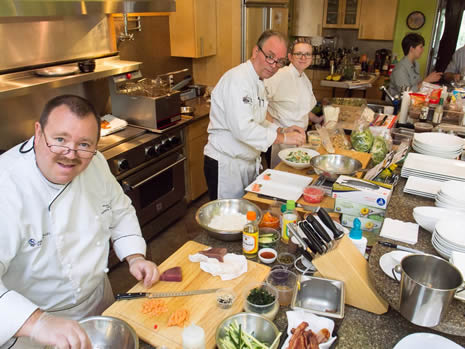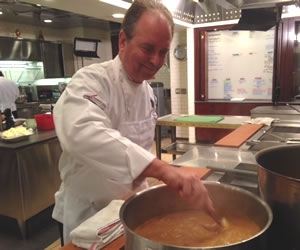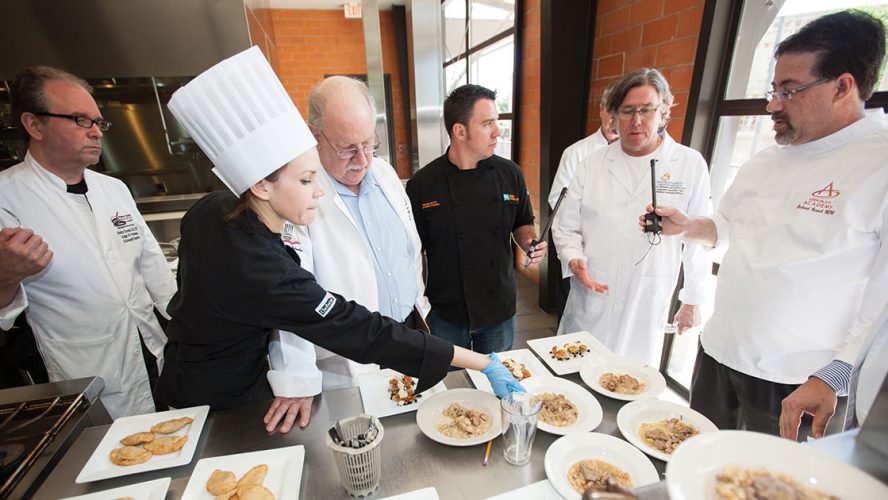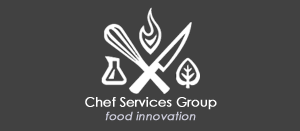Culinary Science with Chef Services Group

What is a research chef?
A research chef, also referred to as a culinary scientist or a research and development (R&D) chef, is responsible for guiding recipe and food product development by testing and (re)formulating products, recipes, and innovations. Being a research chef is as much an art as a science.
An R&D chef is also known as a food technologist/chef who works alongside a food scientist to develop and test products and recipes for mass production. While they have a background in culinary arts and a deep understanding of sensory science and functional ingredient relationships in formulas, they are more skilled at creating a gold-standard recipe or manufacturable-to-scale formula that can be produced in large-scale production.
Why do recipes need to be altered when being mass-produced?

Recipes made at home in a single batch format are typically captured in volume measurements, but when commercializing a recipe, ingredients need to be measured by weight. Additionally, ingredients used for manufacturing are often not the same as ingredients used for smaller home-cooked or restaurant-prepared finished dishes. For example, when creating a BBQ sauce, many use processed prepared ketchup, which can be costly when batching up a large amount of sauce. Therefore this ingredient becomes tomato paste, vinegar, salt, pepper, and sugar, for example. Another example is preparing an item to survive freeze-thaw. The thawing of water that tends to crystalize needs to be managed with emulsifiers or thickeners that aren’t common in the traditional kitchen, like specialty industrial starches and hydrocolloids (Gums).
Our culinary technologists are skilled and ready to work with you to take your dish from a gold standard stovetop recipe to a commercialized plant-ready formula ready for manufacturing.
Our Process
Step 1 – Audit
First, we’ll take an audit of your current recipe and the ingredients used: Will the product be frozen or fresh? What type of packaging and format will need to be used? Do you want to make nutritional claims or are there concerns with ingredients? For example, does it need to be gluten-free or GMO-free? Does it need to be refrigerated or shelf-stable and what are your shelf-life objectives? Once we have this information, we’ll have a better understanding of how we need to formulate and convert your recipe.
Step 2 – Raw Materials
Next, we’ll evaluate the raw materials needed for the recipe and determine which need to be converted. Again, we can think of the ketchup example here. PH levels will be measured for exact acidic levels to give the product a longer shelf-life.
Step 3 – Scaling Out
From there, ingredients are scaled to weight from volume metric measurements and the recipe is prepared for the client to come and taste the new, scaled recipe.
Step 4 – Production
After the taste has been approved by the client, it goes to production. Production starts with a minimum of 100-150 pounds and if it passes, it’s ready for commercialization. A pilot run in smaller increments may be sent to a microbiology lab to estimate a claim on the shelf-life of the product.
Step 5 – Labeling
We’ll work to create nutrition labeling for your recipe and ensure labels are USDA and FDA-approved, in compliance with the NLEA (Nutrition Labeling and Education Act), and lists all ingredients, including allergen claims.
Step 6 – Go to Market
Finally, your recipe is ready for commercialization! It will be sent to customers for tasting and will receive approval to launch with our go-to-market strategy.

Ready to learn more?
Contact us now to learn how our research chefs can bring your recipe from your home and into the world.

